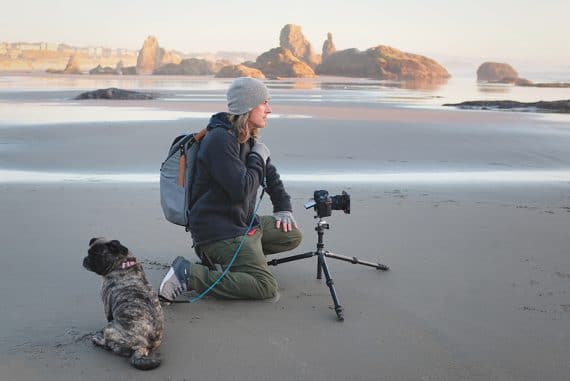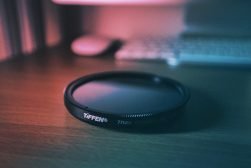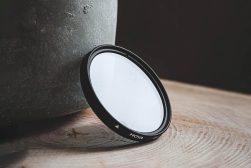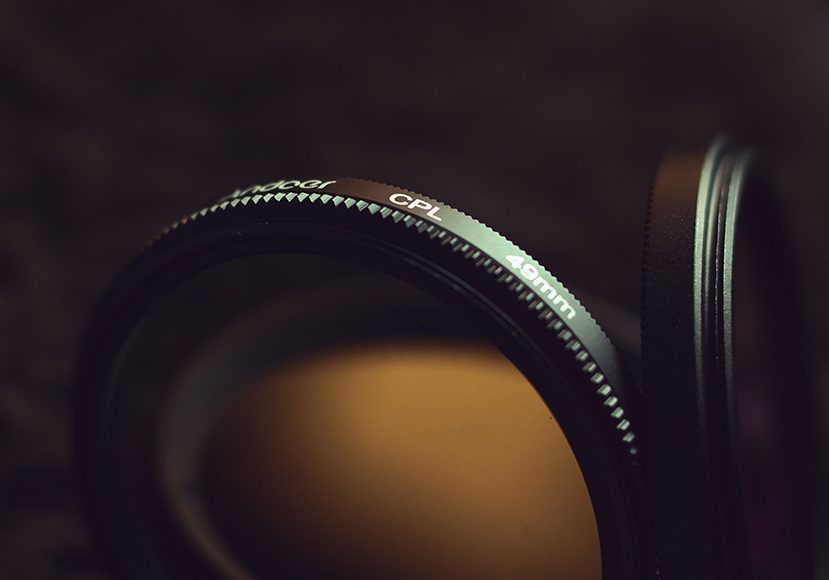
Best Camera Polarizer Lens Filter in 2023 for Outdoor Photography
Using a polarizing lens filter is a great way to bring out more contrast in your photography. They're also great at reducing reflections and light transmission.
This guide will reveal the best polarizer lens filters to attach to your camera for outdoor photography.
I’m an experienced landscape photographer and have a polarizing filter attached to my lens 99% of the time.
Using a camera polarizer lens filter helps reduce glare and reflections when shooting through windows or around water.
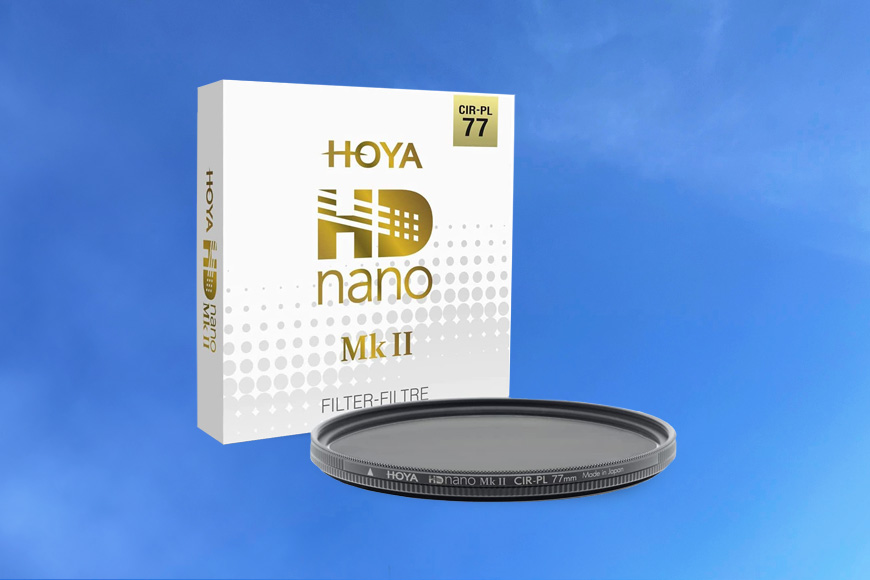

Excellent light transmission with minimal vignetting makes this polarizing filter the best option for most photographers.
They’re also great for contrast and saturation enhancement and can help darken the sky without underexposing your foreground.
If you’re new to using polarizing filters, I’ll also explain how they work, how to use them and some tips for getting the best results with a polarizing lens.
I’ll also cover some FAQs, so by the end of the article, you’ll feel confident enough to choose your first polarizing filter.
You may also want to read our articles on CPL filters, neutral density filters, UV camera lens protection filters and lens filters in general.
What is the Best Camera Polarizer Lens Filter in 2023?
| Image | Product | Features | |
|---|---|---|---|
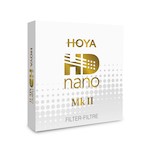 | Hoya HD Nano MkIIOUR #1 CHOICE |
| View Price → |
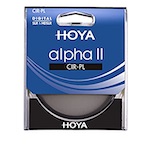 | Hoya Alpha IITOP RATED |
| View Price → |
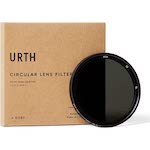 | Urth Circular PolarizerGREAT VALUE |
| View Price → |
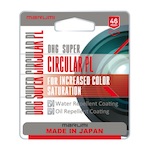 | Marumi DHG |
| View Price → |
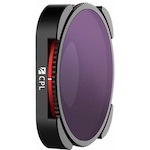 | Freewell CPL Circular Polarizer |
| View Price → |
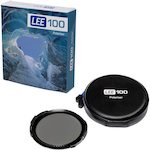 | LEE100 Polarizer |
| View Price → |
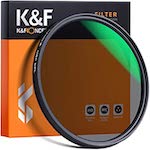 | K&F Concept Circular Polarizer Filter |
| View Price → |
Hoya HD Nano MkII

- 16 layers of nano coatings
- Water and oil repellent
- Lets in 25% more light
- Ultra-thin frame for minimal vignetting
- Reduces unwanted light waves
- Higher light transmission means it has less ability to act as an ND filter
- Cost is on the higher end
The Hoya HD Nano MkII polarizing filter is my number one choice among all the other polarizing filters on this list.
Hoya pulled out all the stops when designing this filter. Not only does it have great performance, but it has much better light transmission than other filters.
The thin frame means that the Hoya HD Nano MkII is much less likely to show up in your images and cause vignetting.
Hoya boasts an improved 200% increase in scratch resistance with the Hoya HD Nano MkII.
Extra protection for your filter translates to extra protection for your lens as well.
Another reason why the Hoya HD Nano MkII is the best polarizing filter out there is down to reflections, or lack of them.
I’ve never seen a filter cut unwanted reflections (and light waves) from glass or the surface of water like the Hoya HD Nano MkII.
This makes it ideal for taking photos through the glass of a car window, or for landscape shots where you’re near to the water and need to cut down on the sun’s rays reflecting onto it.
You’ll also be able to get a dramatic increase in contrast and color saturation.
Hoya Alpha II
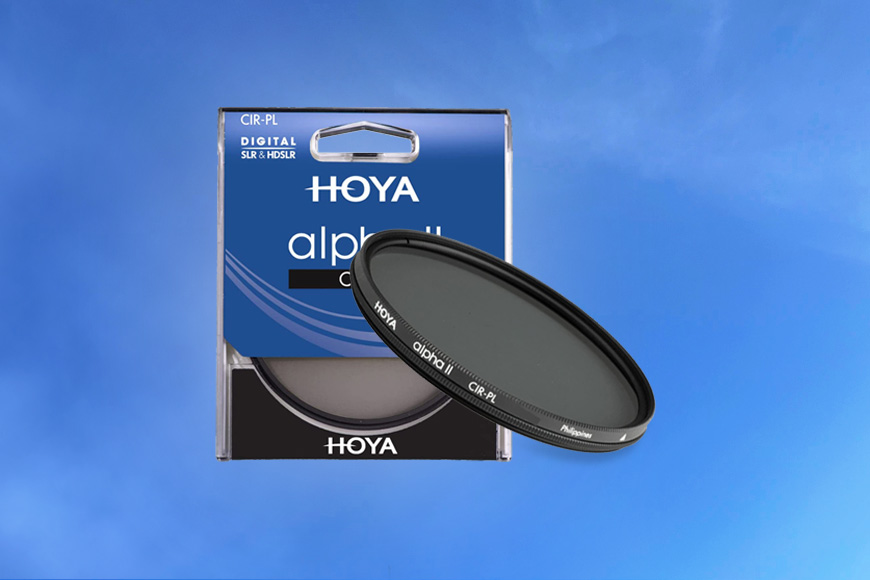
- Best budget performance
- New design is much thinner
- Works as a basic ND filter
- Lightweight design with a rotatable filter
- There are better options if you have some extra money
- No optical coatings or waterproof layer
You don’t have to empty out your wallet to get a polarizing filter that delivers on quality and performance.
The Hoya Alpha II takes a great approach to reducing cost while still keeping performance at a premium.
The Hoya Alpha II removes non-essential features like waterproofing layers and changes the type of glass used to save you money.
(It still delivers all of the essentials of a polarizing filter just without the extras.)
This means it is great for students, hobbyists, and even professionals looking to work with a polarizing filter for the first time.
I keep this budget polarizing filter on hand as a backup in case anything happens to my trusty Hoya HD Nano MkII.
Urth Circular Polarizing Lens Filter
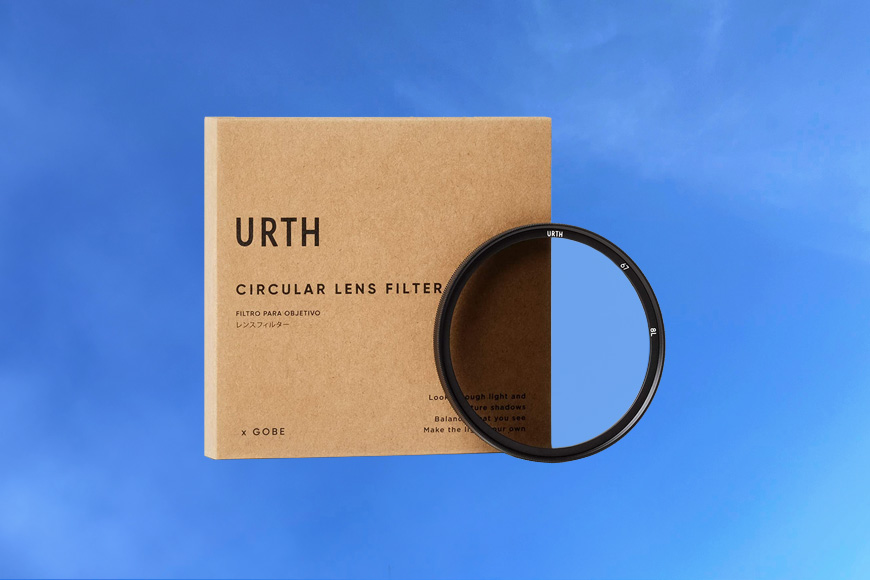
- Creates a 1.33 f-stop light reduction
- Urth has a reputation for environmentally friendly products
- 8-layer nano coating
- Smooth CPL rotation
- Images might be a bit dark without f-stop compensation
The Urth Circular Polarizing Lens Filter has got to be one of my favorite designs for a polarizing filter.
The rotation of the Urth Circular Polarizing Lens Filter is incredibly smooth and precise.
You really have to try this one out for yourself to feel just how much control you have over your polarization.
Urth makes a few different versions of this polarizing filter. There are more budget-friendly options as well as high-end options with more premium features.
This is one of my go-to polarizing filters when I’m looking to get some basic ND filter utility as well as polarization.
Urth also has a great reputation for producing quality products and supporting the environment. If you’re a landscape or wildlife photographer, you’ll know just how important that is.
Marumi DHG

- Made of optical glass
- Low profile with 5mm total height
- Designed to reduce internal reflections as well as external
- Hardened coatings help with scratch resistance
- Not water resistant
- Only 6 optical coatings
The Marumi DHG polarizing filter is one of the best-kept secrets in photography.
This brand might not have the recognition of its more popular counterparts, but it’s a force to be reckoned with in the niche world of circular polarizers.
One of my favorite features of the Marumi DHG is that it maintains such a low profile while still having threaded connections on both ends.
This means that you can attach other filters on top of this one for an added effect – some photographers call this ‘stacking’ filters.
The brand behind Marumi DHG has been around for a long time.
While they flew under the radar of bigger names, they have a decades-long reputation for delivering some of the best quality polarizing filters for photographers.
If you’re looking for a time-tested product, you should definitely give the Marumi DHG a try.
Freewell CPL Circular Polarizer Camera Lens Filter for GoPro Hero
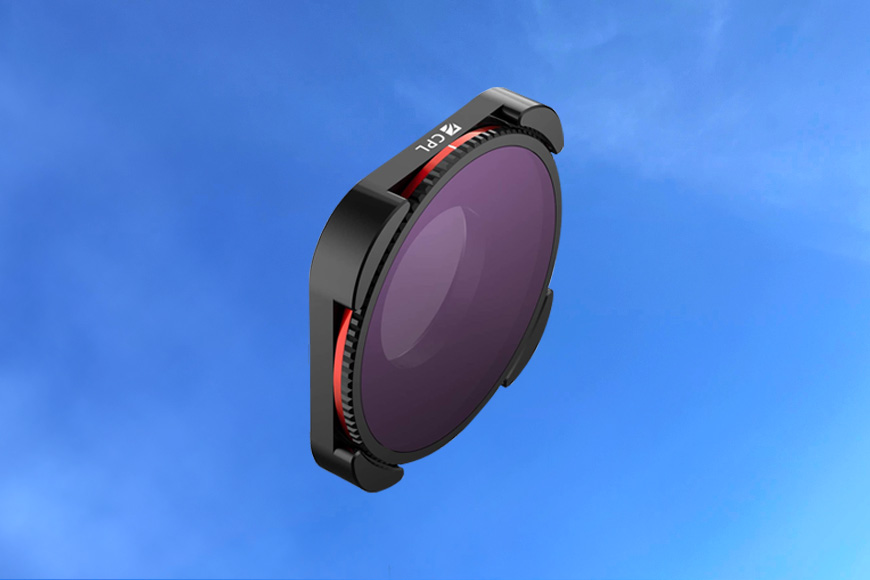
- Compatible with the Hero11, Hero10, and Hero9 Black
- Tested safe for use with drone and gimbals
- Scratch resistant
- Built tough
- Small size makes it hard to adjust
- Not suitable for underwater or heavy water situations
You might be surprised by how much professional photographers rely on GoPro cameras.
I’ve almost always got my GoPro going to help get secondary footage that I can use to make content to promote my photography.
The Freewell CPL Circular Polarizer Camera Lens Filter is my top choice as a polarizing filter for GoPro cameras.
This polarizing filter is built specifically for working with GoPro. That means it;s designed to withstand the action your GoPro camera sees while still being safe for use with drones and gimbals.
The Freewell CPL Circular Polarizer Camera Lens Filter adds some extra richness to your colors while taking out that pesky glare that can ruin the shots that you take with your GoPro.
This polarizing filter is especially important if you use your GoPro for sports or action.
That added layer of protection is going to mean that you don’t accidentally ruin the shot of a lifetime with glare or unwanted reflections – things that are typically hard to preview on a GoPro, and will become obvious when viewed on a computer.
In my opinion, the Freewell CPL Circular Polarizer Camera Lens Filter is an essential part of any serious GoPro kit.
LEE100 Polarizer
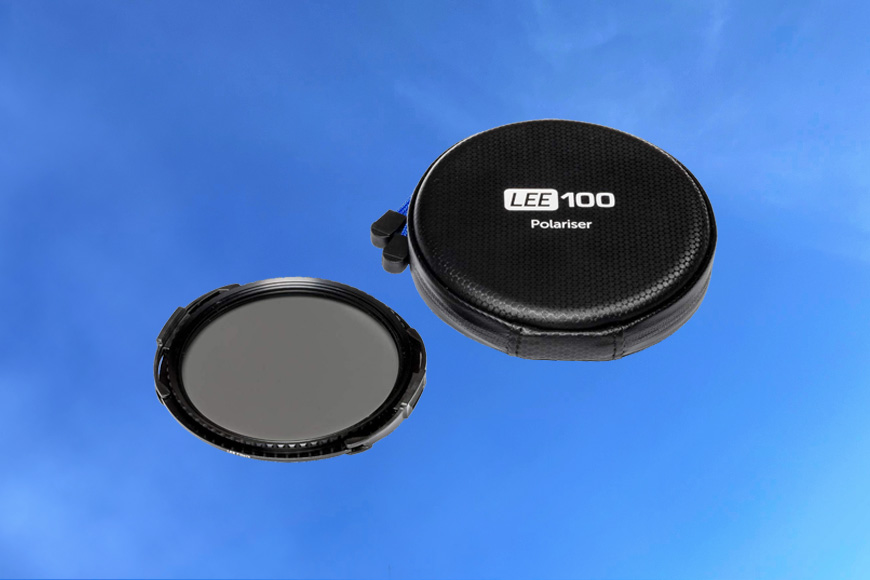
- Unique clip-on design
- Great for removing glare from the surface of water
- Easily stack with other filters—even square filters!
- Rugged design stands up to tough shooting conditions
- Clip-on design takes some getting used to
- You’ll need to triple-check compatibility with your lens
The LEE100 Polarizer is a unique polarizing filter. It ditches the traditional threaded screw-on design for a much faster clip-on design.
This clip-on design means that you can quickly change out the LEE100 Polarizer while on a shoot.
If you’re shooting in a situation that might mean you need to remove your polarizing filter quickly, the LEE100 Polarizer is exactly what you’ve been looking for.
The LEE100 Polarizer also has a unique design that can stack with square filters as well as other threaded filters.
This gives you total flexibility with how you use this CPL filter in your photography.
The design of this polarizing filter is especially useful for landscape photographers.
You’re much less likely to get vignetting with the LEE100 Polarizer on a wide-angle lens when compared to shooting wide with other polarizing filters.
K&F Concept Circular Polarizer Filter
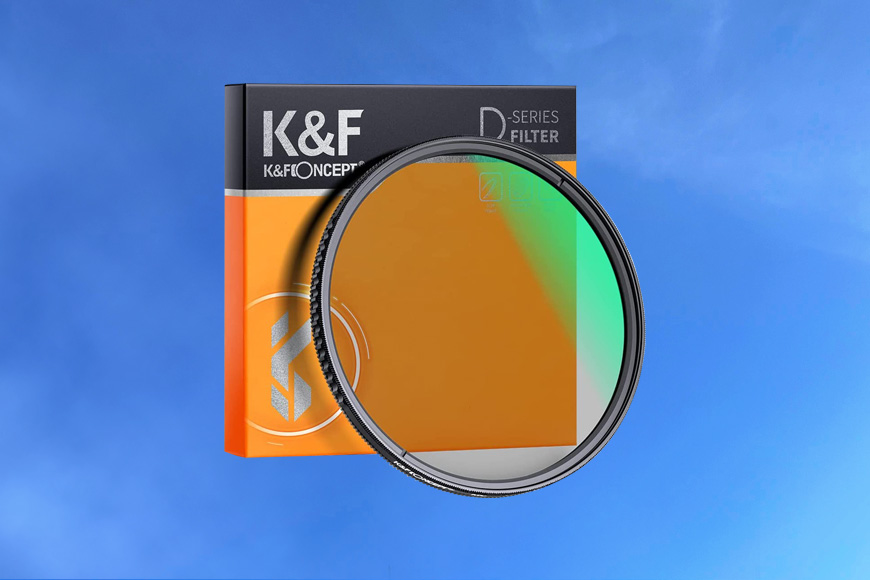
- Water and oil proof
- 5.3 mm thick
- 24 multilayer coatings
- Designed to reduce ghosting
- Could be made of better glass
- A bit hard to remove
The K&F Concept Circular Polarizer Filter is an ideal option if you want something a little above bargain-basement without having to spend too much.
This filter has almost all of the features you’d get in a high-end polarizing filter, but without the price.
The K&F Concept Circular Polarizer Filter has been a favorite of mine for a while now. This filter always gives me great results in the field when I’m shooting landscapes, particularly on very sunny days.
The green coating is not only eye-catching, but it also does a great job at removing ghosting. That’s a serious problem that even the best filters have to manage.
The K&F Concept Circular Polarizer Filter saves on costs by using a slightly lower grade of optical glass. While there are better options out there, this is by no means a bad choice.
The circular control for this filter is a little difficult to grab hold of, but you get the hang of it after a while.
10 Tips for Getting the Best Results with a Polarizing Filter
- Learn Your Lens Filter – Before you head out to capture the shot of a lifetime, take your new polarizing filter out for a few test runs. This way, you know it inside and out before you need to rely on it to get the shot
- Always Get the Right Polarization – I used to spend too much time fidgeting with my polarization filter. Now, I just set it to its maximum effect and slowly turn it back. This lets me always get the right effect for my scene
- Use It As a Budget ND Filter – Your polarizing filter haircuts about one-and-a-half f-stops of light from your image. This means that you can use it as a very minimal ND filter long exposures
- Buy Quality – Filters or one of those areas where you do not want to cut corners on your budget. A high-quality filter is going to give you much better results and performance than their budget alternatives
- Polarize a Panorama – I’ve heard a lot of people say that you should never use a polarized filter on a panorama, but I disagree. You can get higher contrast and more beautiful skies in your panoramas by using a polarizing filter adjusted to its most minimal setting
- The 90-Degree Rule – All polarizing filters work best when they are at a 90-degree angle to the Sun or another light source. You can always find a 90° angle to the Sun by making an “L” shape with your thumb and index finger and pointing your index finger at the Sun. Your thumb points at a perfect right angle towards where your polarizing filter will have the best results.
- Polarizing Filters Change Exposure – Always keep in mind that a polarizing filter is going to let less light into your image. You’ll have to compensate for your exposure accordingly
- Don’t Point Directly At the Sun – Pointing a polarizing lens directly at the Sun breaks the 90-degree rule see. This causes a lot of light streaks and distortion in your images
- Watch Out For Vignetting – Zoom lenses have a tendency to capture the rim of your polarizing filter, causing some dark vignetting on the edges of your image. Higher-end polarizing filters have thinner frames which work to eliminate or minimize this vignetting
- Go Easy On Your Polarization – When I first started using a polarizing lens, I was tempted always to go hard and go for the most polarized light. You can often get better images with a lighter touch and more realistic colors.
Everything You Need to Know About Camera Polarizer Lenses
I’ve been using polarizer filters for years and in just about every shooting situation – not just for landscape photography.
Here are some of the best tips I’ve picked up for using a camera polarizing lens.
How Does a Polarizing Lens Work?
A polarized filter has a special layer that removes horizontal light from your images. This works while still letting vertical light through.
This is how a polarizing filter can remove glare, reflections in windows, and reflections from the surface of water without removing light from the rest of the image.
What are the benefits of using polarizing filters?
There are a few key benefits to using a polarizing lens.
The most pronounced benefit is that it reduces reflected light and glare, particularly prevalent on reflective objects, metal surfaces and window reflections.
A polarizing lens also increases the contrast in your image and can help bring out richer colors and more pronounced clouds in a vibrant blue sky.
Polarizing filters also reduce atmospheric haze in your images.
Polarizing filters also reduce the total amount of light coming through your lens (reduces light transmission). You can use this to increase your exposure time for some interesting shots.
How to choose the right polarizing lens filter for your camera
There are three major things that you need to consider when purchasing a polarizing lens filter for your camera.
You need to make sure that you get the right diameter, the right type of filter, and a filter that fits your budget.
The diameter of your lens is going to dictate the diameter of the lens filter attachments that you can get.
You can get adapters to make other types of filters fit, but you’re better off getting a lens filter that matches your lens.
There are also several types of lens filters that you need to consider.
I’m a big fan of circular polarizing filters because of their flexibility, but you can also do some interesting photography with a linear polarizing lens.
Budget is a big consideration when buying any kind of photography gear. The more you’re willing to spend, the better gear you can get.
If you just want to give a CPL a try, there’s nothing wrong with getting a budget filter to start with!
How to adjust the polarizing effect
You can adjust a circular polarizing filter by slowly turning the ring. This changes the angle of light that is blocked from your image.
Be careful not to unscrew or over-tighten the filter when making these adjustments. High-end polarizing filters often have a dedicated knob that you can use to adjust the filter.
What are some common subjects for polarizing lenses?
Polarizing lenses are great for a variety of photography styles and subjects.
Glass surfaces are common subjects when using a polarizing lens. Polarizers take out the reflection that bounces off of glass which gives you a much clearer picture.
You can also use a polarizing lens to get more robust color out of your skies and horizons, or to increase color saturation.
A polarizing filter can be used to take out the reflection on the surface of water.
This polarizing effect is especially useful if you’re taking a long exposure and looking to get to that cottony, moving effect that you can get with water.
Polarizing lenses take out a few stops of light from your image. This makes them an ideal choice for taking some long exposures.
I’ve heard a lot of people say that you can’t use a polarizing filter to take a picture of a rainbow, but this just isn’t true.
It’s true that a polarizing filter will normally eliminate a rainbow from a picture. Still, you can actually reverse the polarization to increase the glare, which makes the rainbow much more pronounced in your image.
I love using circular polarizers when taking pictures of cars and other vehicles. There’s just no better way to cut down on those distracting reflections on the windshield and other reflective objects.
There are a few things you should never use a polarizing filter for.
While you can use a polarized filter for wide-angle photography, you might have to deal with some extra distortion in your images that you have to remove in post-production.
Polarized filters also create some problems when taking photographs at night.
More Frequently Asked Questions about Using Polarizing Filters
Can a polarizing lens filter damage my camera or lens?
A polarizing lens filter is very unlikely to damage your lens, but there are a few ways that it could wear down your lens faster if misused.
Your biggest risk is going to be damaging the threads that allow you to connect the filter to your lens.
Your polarizing filter should be firmly attached, but don’t over-tighten it, or you could strip the threads and get your filter stuck.
Can I use a polarizing lens with a wide-angle lens?
I’ve gotten great results using polarizing filters with wide-angle lenses, but you want to make sure you don’t go any wider than about 24 mm.
Using a wide-angle lens with a focal length wider than 24 mm with a polarizing lens can create a lot of distortion in your images.
However, this distortion has an interesting aesthetic that many photographers incorporate for a cool, lo-fi look.
Rectangular filters or square filters are a better choice for wide-angle lenses when shooting landscapes with high contrast between the ground and the sky.
You may need a filter holder for rectangular filters.
Can I stack polarizing lenses for a stronger effect?
You can stack as many polarizing filters as you want, but more polarizing filters often means more haze and blur on your final images.
Having multiple circular polarizers can also mean more chances for reflected light transmission between each filter.
Always keep in mind that the circular polarizing filter goes closest to the lens. Make sure to put parallel filters on top of circular filters, and you’ll be good to go.
You can also create a custom variable ND filter with two polarizing filters. Just make sure to flip one of the polarizing filters around using a male-to-male filter adapter.


Excellent light transmission with minimal vignetting makes this polarizing filter the best option for most photographers.





